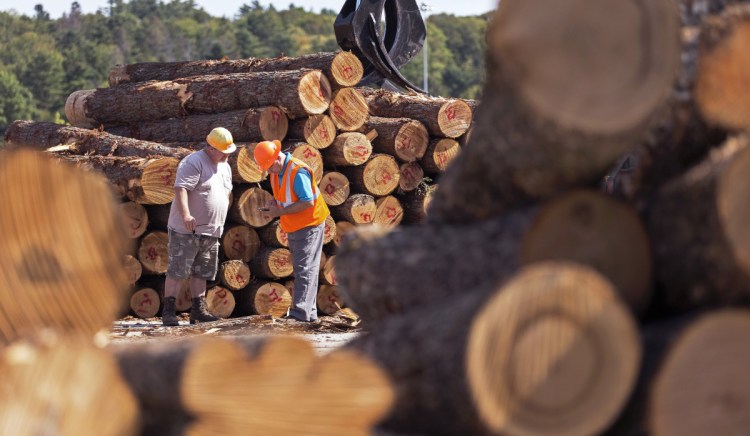Maine lawmakers faced a crisis in 2016: Subsidize the biomass industry or see hundreds of jobs vanish.
It wasn’t much of a choice, following the shutdown of paper mills in Madison and Bucksport, which cratered demand for pulpwood. Gov. LePage reluctantly signed the $13.4 million bill, but last February he made clear that he wasn’t happy about it.
“They’re not putting any money into the plants,” LePage said of the biomass generators that benefited from the bailout. “They’re taking the subsidy and they’re going to sit on it for two years. And in two years they’re gonna come back and say, ‘Anymore subsidy, guys? If you don’t give us more subsidy we’re going to close.’ ”
Here in 2018, we see that the governor was right on the mark. Maine taxpayers are helping out-of-state companies buy wood chips that are burned to make electricity, which is then sold back to Maine people at higher-than-market rates. And now there is a bill before the Legislature requesting a $25 million bond to subsidize biomass infrastructure so this cycle can continue.
LePage is against it, and so are we. What was a crisis two years ago is now just the way things are. It’s time that Maine look to the future of how it will manage its forest, instead of clinging desperately to what has already been proven not to work.
Even though things look fairly dark right now, there is good reason to be optimistic about the future. There’s a lot that can be made with wood these days besides paper and two-by-fours, and Maine, with its 18 million-acre forest, is well situated to have a role in a new forest economy.
Engineered wood that’s stronger than steel has been developed at the University of Maine’s composite lab, and products like it have been used in a number of applications, including high-rise buildings in Canada and Europe. Wood can be converted into diesel and jet fuel. It can even be made into food.
These technologies and others that are just emerging from the laboratory suggest an economic future in which our natural resources can be turned into value-added products that generate good, sustainable jobs – unlike biomass energy plants, which extract the least amount of value from wood by doing no more than burning it.
There is a role for biomass, but it’s a limited one. Manufacturing plants and sawmills that produce wood waste can burn biomass for heat and electrical generation in an economical way. There’s a market for sawdust that can be turned into wood pellets. But stand-alone wood-to-energy plants consume as much government subsidies as they do wood chips to produce power. In addition to the high prices they can charge for electricity, the industry has been able to sell renewable energy credits, and collect federal grants as well as the $13.4 million subsidy from Maine taxpayers.
And as the governor predicted, it has not been enough to keep the biomass industry afloat.
There is a government role in transitioning the forest products industry into a new era. Last year, UMaine’s Mass Timber Commercialization Center received a $454,532 federal economic development grant to help bring new products to market. LePage supports a different state bond, which would borrow $50 million to make equity investments to help new wood-based companies get off the ground.
These are the kinds of forward-looking projects that will usher in a new era in the Maine forest. It would be better to give direct aid to out-of-work loggers and woodlot owners during the transition than it would be to borrow money so taxpayers could prop up an industry that can’t stand on its own.
Send questions/comments to the editors.



Success. Please wait for the page to reload. If the page does not reload within 5 seconds, please refresh the page.
Enter your email and password to access comments.
Hi, to comment on stories you must . This profile is in addition to your subscription and website login.
Already have a commenting profile? .
Invalid username/password.
Please check your email to confirm and complete your registration.
Only subscribers are eligible to post comments. Please subscribe or login first for digital access. Here’s why.
Use the form below to reset your password. When you've submitted your account email, we will send an email with a reset code.